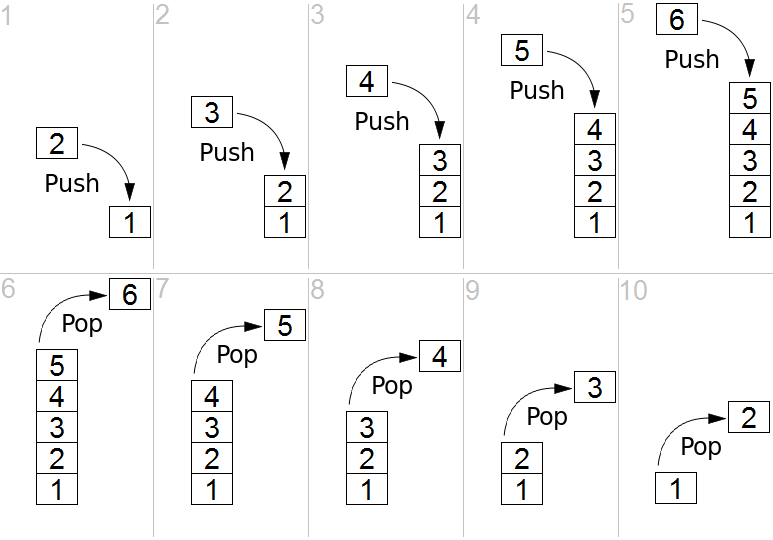栈
一个 栈(stack) 是一种抽象数据类型,用作表示元素的集合,具有两种主要操作:
push, 添加元素到栈的顶端(末尾);
pop, 移除栈最顶端(末尾)的元素.
以上两种操作可以简单概括为“后进先出(LIFO = last in, first out)”。

复杂度
时间复杂度
获取:O(n)
查询:O(n)
插入:最好情况O(1) 最差情况O(n)
删除:最好情况O(1) 最差情况O(n)
空间复杂度
O(n)
Stack:栈类,栈其实就是只能在一端插入和删除的链表
import LinkedList from '../linked-list/LinkedList'; export default class Stack {//栈类,栈其实就是只能在一端插入和删除的链表 constructor() { // We're going to implement Stack based on LinkedList since these // structures are quite similar. Compare push/pop operations of the Stack // with prepend/deleteHead operations of LinkedList. this.linkedList = new LinkedList();//linkedList属性是一个链表对象 } /** * @return {boolean} */ isEmpty() {//判断是否是空栈 // The stack is empty if its linked list doesn't have a head. return !this.linkedList.head; } /** * @return {*} */ peek() {//获取栈的顶端的节点 if (this.isEmpty()) {//如果空栈,返回null // If the linked list is empty then there is nothing to peek from. return null; } // Just read the value from the start of linked list without deleting it. return this.linkedList.head.value;//返回头结点的值 } /** * @param {*} value */ push(value) {//在顶端插入新节点 // Pushing means to lay the value on top of the stack. Therefore let's just add // the new value at the start of the linked list. this.linkedList.prepend(value); } /** * @return {*} */ pop() {//在顶端删除头结点,返回被删节点的值 // Let's try to delete the first node (the head) from the linked list. // If there is no head (the linked list is empty) just return null. const removedHead = this.linkedList.deleteHead(); return removedHead ? removedHead.value : null; } /** * @return {*[]} */ toArray() {//返回所有栈元素的值组成的数组 return this.linkedList .toArray() .map(linkedListNode => linkedListNode.value); } /** * @param {function} [callback] * @return {string} */ toString(callback) {//返回所有节点调用节点自身的toString方法经由callback处理后的值组成的数组的字符串 return this.linkedList.toString(callback); } }
note:
1.push用头插法。pop用头删法。tail对应栈底。
栈类,栈其实就是只能在一端插入和删除的链表


